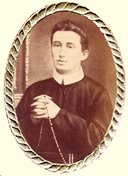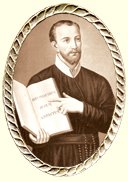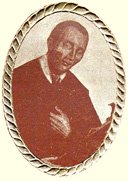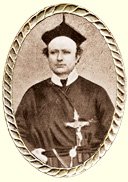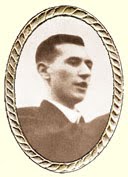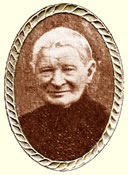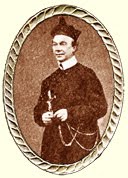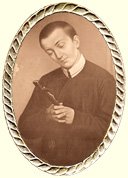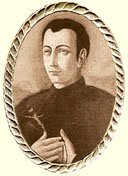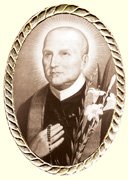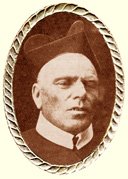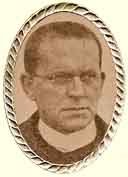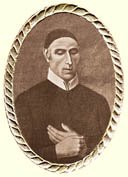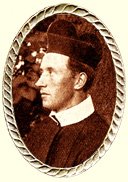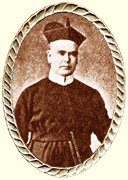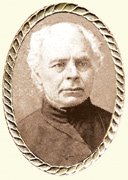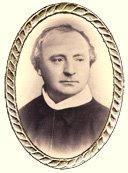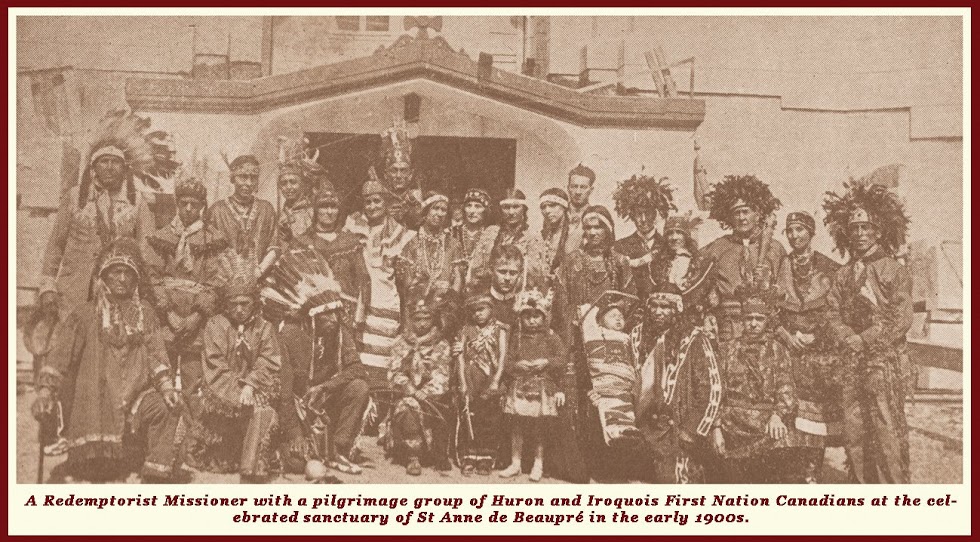Rev. Fr Raphael Villanacci, C.SS.R. (1851 – 1936)
 Which inhabitant of Nocera would not have known Don Raffaele, that old man dressed in old-fashioned Liguorian clothes, with his collar always open, his head covered with an ancient hat, shod with the most antiquated of footwear and supported by a stick of no value? They would see him almost every day, making his way to this house or that cottage, always cheerful no matter whether he walked in the clouds of dust whipped up by the wind or along the dirty country roads, in the heavy rain of winter or the stifling heat of summer. It was a truly heart-felt love for Christ which drove this old man on: his desire was to bring men spiritual and physical help and her never gave up his journeys on foot even when he had already passed eighty years of age. Death finally came upon him as it comes on a soldier in battle.
Which inhabitant of Nocera would not have known Don Raffaele, that old man dressed in old-fashioned Liguorian clothes, with his collar always open, his head covered with an ancient hat, shod with the most antiquated of footwear and supported by a stick of no value? They would see him almost every day, making his way to this house or that cottage, always cheerful no matter whether he walked in the clouds of dust whipped up by the wind or along the dirty country roads, in the heavy rain of winter or the stifling heat of summer. It was a truly heart-felt love for Christ which drove this old man on: his desire was to bring men spiritual and physical help and her never gave up his journeys on foot even when he had already passed eighty years of age. Death finally came upon him as it comes on a soldier in battle.
From 13 March, 1875, he had served God faithfully amongst the secular priests of his archdiocese. There is a book called “Heroes of the Village” (published at Naples in 1928) in which a layman, Professor P. Parrella, in admiration dedicated to our recently deceased brother (who then, of course, was still alive) some beautiful anecdotes. He tells stories from his own experience which remind one of those famous Fioretti of St. Francis of Assisi and his friends. From among these tales, which should really be experienced in his native idiom, let us choose one or two episodes.
Raphael Villanacci, when he was a parish priest, first at Monteroso, then in Rochetta and finally at the church of St. Nicholas in Manfredi, either flatly refused any worldly reward for his priestly offices or instantly gave it away to the poor. He renounced all claim to his grandparent’s property in favour of his sister and other relatives. For his part, he lived a solitary life in extreme poverty. His own house was very modest and if he found anyone in need he gave him whatever he had with loving generosity – shoes or stockings, a shirt, warm trousers or wood. One time he had bestowed his possessions on others so liberally that he was forced to stay indoors without food or heating, almost without clothing, until another priest, the Archpriest, Andreas Magnanelli, came upon him unexpectedly, or more likely sent by God, and was amazed to see such poverty and yet such love.
Whilst he was physically strong he did not shirk hard labour, even the most lowly, helping the farmers carry sacks of corn or wheat and similar tasks. His face was disfigured by smallpox scars and his outer clothing was wretched, nevertheless innocent little children everywhere would love to run after him. Once in the village of Pagliara a little girl who was dying is said to have breathed her last with a smile on her lips after the beloved parish priest had come to see her.
Finally we record this, using the exact words written by the same author (He is addressing Raphael): “A man, envious of your heroic virtues (perhaps driven by his own ignorance) had called you a ‘sad case’. O sad case! Surely you, a most beautiful soul, the purest and holiest of men, are not a sad case? Are you a sad case, you who spread goodness wherever you went like an angel of God?”
Raphael Villanacci, since he yearned for greater perfection, expressed a desire to join the children of St. Alphonsus and he took his vows on 19 October 1905 when he was in his 54th year. However, he did not even look like a man in his forties and devoted himself to our apostolate with truly youthful vigour, first in Naples and then in Calabria. In 1916 he was made Confessor to the novices at Licteri and then came to Pagani where he would spend the rest of his life, continuing the labour of love which he undertook in the world of men. He like to appear abject and despised so that he might more readily come to the help of those who were genuinely abject and despised. For him there was no cottage too filthy, no sacrifice too hard and whatever alms he received from his superiors or from the civil magistrates he distributed with an outpouring of love in the exercise of his priestly apostolate.
There was once an incident when a man, who had earlier met the Father on the road, clad in his so humble clothing, and had heaped insults on him, but who soon afterwards threw himself in contrition at the priest’s feet and was received with the most noble kindness.
Clearly he was dead to self and loved to be unknown, to be thought of as nothing, and when he came to the evening of his life, he treated with joy the fact that in the Congregation he had held no office of honour. For him honour and glory was to visit and give aid to the sick and needy, to befriend priests taking a break at our House, to amuse the younger men with anecdotes.
When he was at home, you would find him either in the Church or in his cell or in the library; but wherever his help was needed he would at once interrupt a job he had started or even set aside some physical refreshment.
This fearless soldier of Christ did not deserve to die except in the heat of battle. On 4 December 1936 before midday he had stood for long hours in the cold Sodality Chapel to help numerous spiritual children of his who wanted absolution from this holy priest or advice or just a word with him. Then, feeling feverish, he went to lie down. He had contracted inflammation of the lungs which resisted all medical attempts to cure it. The sick old man received assistance day and night, but he himself, like St. Martin, “did not release his unconquered spirit from speaking”. He received Holy Communion every day. He asked to make a general confession before the Viaticum was administered, at which time he followed the prayers with close attention. Finally, as consciousness began to slip away, what did he say? Not one word escaped his lips except the names of the poor and sick, exhortations to a holy life or that they should take bread and suchlike from the pocket of his long cloak.
On the feast-day of the primary Patroness of our Institution, as I have already said, at 3.30 in the afternoon he peacefully breathed his last amongst the prayers of the entire community, holding in his hands the effigy of the Most Holy Mother of God. Once news of his death spread, crowds immediately gathered to kiss the body of the “holy man”, which in the meantime had taken on a beauty which it had never had in life. And God, Who rewards with diving generosity the compassionate and the lowly, willed that the funeral of this compassionate and lowly priest should be celebrated with especial glory, even more splendid than the funeral in 1917 of another greatly mourned Father.
The people, advised of the event by the clergy of the place who advertised the fact widely on the day following his death, came in a great throng to the Basilica where the body lay exposed, so that the church was filled to capacity. They prayed, they wept, they piously “tore” relics from his clothes. We had decided that his funeral should be a modest affair, as is our custom; but it proved impossible to deal with it that way. “We demand that he be brought outside the church,” said the people. A huge multitude has gathered not just from the city of Pagani which today boasts a population of 20,000 inhabitants, but from the surrounding districts, too – priests, religious, civil magistrates, religious and civil associations with their banners. They wanted to carry the casket on their shoulders and four senior magistrates held the ropes of the bier. A great many people, noble and ordinary, believers and non-believers, followed with heads bared. And so, this sad yet triumphant procession made its way through the principal parts of the city and by all the crossroads. In the parish church another absolution was given from a magnificent platform prepared especially for the event. Burial was freely granted in a small area of the chapel grounds which the Sodality of Our Lady owns within the public cemetery. †






















.jpg)









